Anyone who has been stung by a black-tailed tiger hornet (Vespa basalis) would understand my immediate trepidation at stumbling on them while hiking Kaohsiung’s Weiliao Mountain (尾寮山). I’ve been stung a few times by these flying hypodermic needles, and the shock of pain lives up to their “murder hornet” moniker.
Should I try to navigate around them, or get the hell off the mountain?
NO 47 OF THE SMALL 100 PEAKS
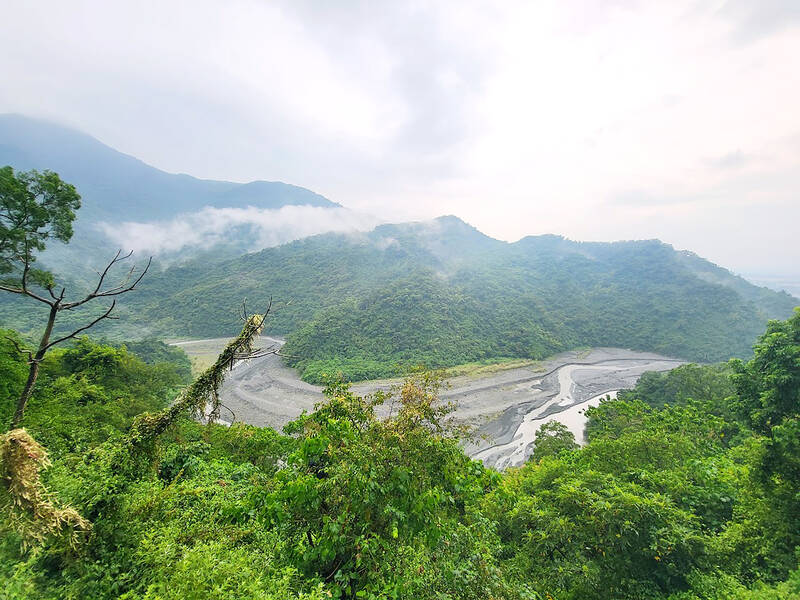
Photo: Mark Roche
Weiliao Mountain (1,427m) is No 49 of the xiaobaiyue (小百岳, “small 100 peaks”). I’d come here late last year to achieve a two-pronged ascent of the peak, breaching the trail on foot and bike from, respectively, the west and east.
I left Kaohsiung at 7pm for a night approach to the trail head, which took about three hours. Night riding may not appeal to some but, with a strong light, once out of the city the roads are quiet and in some ways safer than the day time.
I camped on the banks of the Jhuokou River (濁口溪) which was bliss on an October evening with only the sound of the river flow breaking the silence.
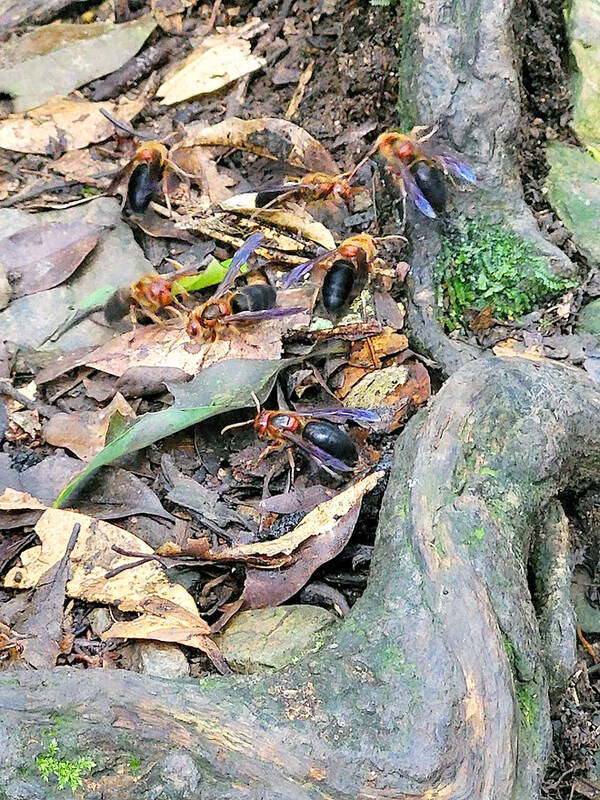
Photo: Mark Roche
HIKING WEILIAO MOUNTAIN
The following morning, I got an early start to the foot of the hike at an elevation of just over 200m. The trail starts out as broken concrete, but it isn’t long before the road dissipates and the trail turns to dirt.
Situated at the 0km marker on County Road No 185 it’s impossible to get lost as there is usually a line of cars parked along the road close to the trailhead. But there is rarely a traffic jam of hikers since most will be fairly well spread out along the 9km route.
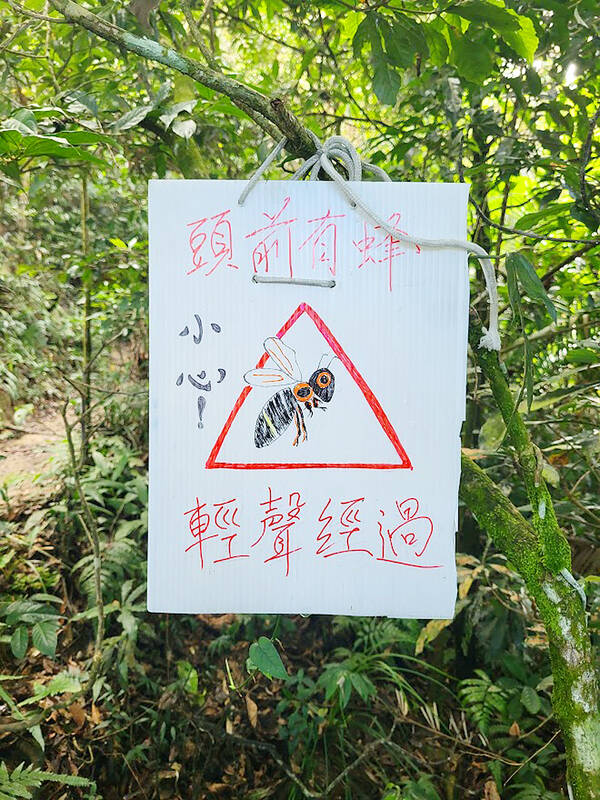
Photo: Mark Roche
After about 2 hours of hiking, there is a gazebo that offers a spectacular view of the Laonong (荖濃溪) and Jhuokuo rivers, which converge in the valley below. It’s an ideal half-way rest point.
The mountain is well known for its dense forest and biodiversity. I saw a Formosan Muntjac, commonly called “barking deer” because of the dog-like bark they emit.
Apart from a few look-out points, the views are mostly obscured by the forest. However, this presents a much better chance of encountering wildlife — though not always of the friendly kind.
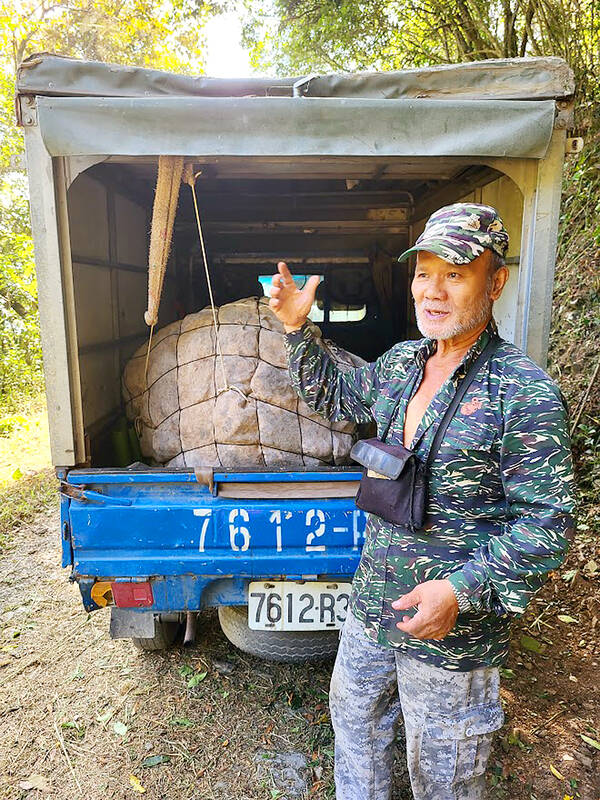
Photo: Mark Roche
THE HORNETS
After three and a half hours, I was approaching the summit on the steepest part of the trail when I noticed two signs warning of the presence of the hornets. The annual season for hornets is from August to January, so it’s unlikely you’ll encounter them now. But if encountered, it’s wise to turn around as they have been known to cause fatalities such is their ferocious nature and the toxicity of their venom.
I was tempted to turn around when I saw a swarm of them on the ground. The scariest thing about these hornets is that they release pheromones when they are hurt or killed. The chemical alerts other wasps to attack. Fortunately, I was able to navigate a path around without stirring them up.
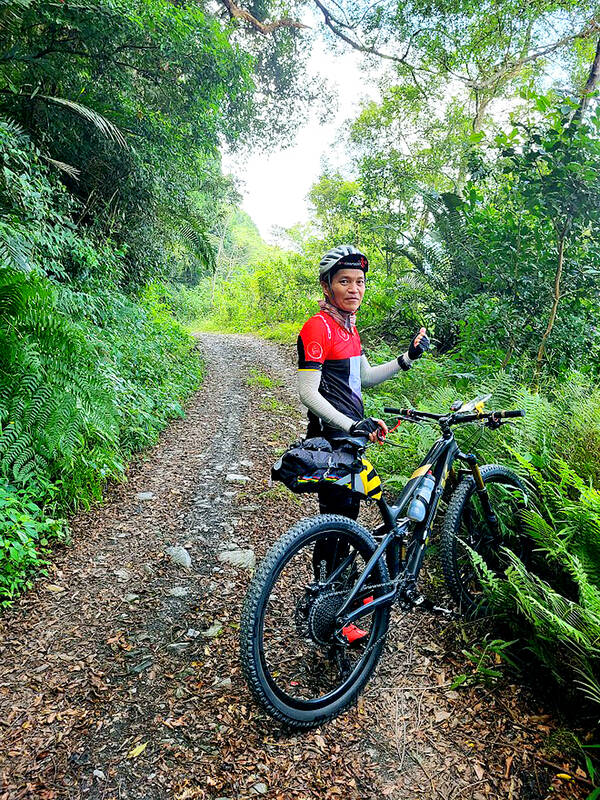
Photo: Mark Roche
After a short break at the summit I noticed the trail going down the other side and realized that this is part of the east approach. Curiosity got the better of me and I couldn’t resist the temptation to explore.
This ended up being a mistake. After 4km on trail going downhill I was now 23km away from the entrance at the other end. I could have backtracked, but clouds were rolling in and I decided to proceed. I soon discovered that I was on the Shaxi Forestry Road (沙溪林道), which is a popular mountain bike route.
It was nearly 5pm by the time I got back to my bike at the west entrance to the trail, so another night was spent at the camp site since I just didn’t have the energy to ride home.
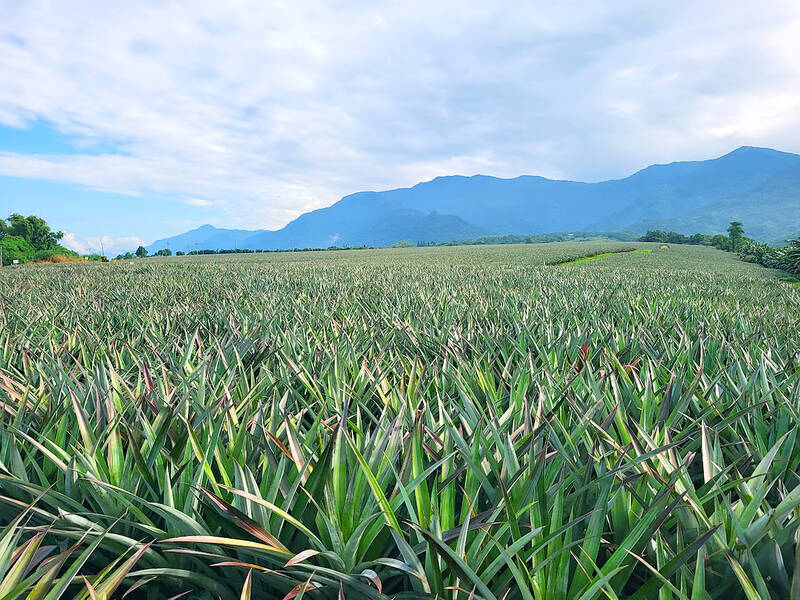
Photo: Mark Roche
BIKING WEILIAO MOUNTAIN
A few weeks later, I mountain biked from the east. In former years the Shaxi Forestry Road was one of the most popular mountain bike routes in southern Taiwan. More recently it seems to have been left to nature and in some parts it’s not always clear that a road ever existed. The starting point is at the 14km marker on County Road No 185.
After several kilometers of concrete, the road turns to dirt and is a joyful meander up the mountain. Unlike the west approach, the east is completely exposed offering spectacular views of the surrounding mountains to the south and east.
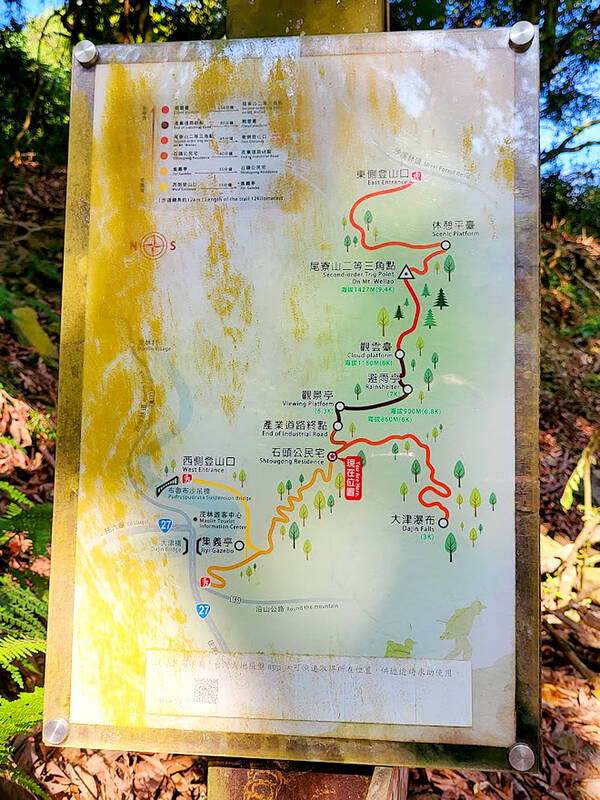
Photo: Mark Roche
On the way up I saw a farmers’ blue truck parked on the side of the road. When I approached he asked if I was going up Weiliao Mountain.
“Be careful of the hornets,” he said to me as he unveiled a massive bundle he had wrapped in netting and stuffed into the back of his blue truck.
He said he had been commissioned to remove a hive of black-tailed tiger hornets and had just finished the task. It weighed over 20kg and was several times the size of a regular bee hive.
Although I made it as far as I could go on the bike, evidence of bees in the area resulted in me not attempting the 2km left of the hike to the peak of Weiliao Mountain. There’s always another time.

In the March 9 edition of the Taipei Times a piece by Ninon Godefroy ran with the headine “The quiet, gentle rhythm of Taiwan.” It started with the line “Taiwan is a small, humble place. There is no Eiffel Tower, no pyramids — no singular attraction that draws the world’s attention.” I laughed out loud at that. This was out of no disrespect for the author or the piece, which made some interesting analogies and good points about how both Din Tai Fung’s and Taiwan Semiconductor Manufacturing Co’s (TSMC, 台積電) meticulous attention to detail and quality are not quite up to

April 21 to April 27 Hsieh Er’s (謝娥) political fortunes were rising fast after she got out of jail and joined the Chinese Nationalist Party (KMT) in December 1945. Not only did she hold key positions in various committees, she was elected the only woman on the Taipei City Council and headed to Nanjing in 1946 as the sole Taiwanese female representative to the National Constituent Assembly. With the support of first lady Soong May-ling (宋美齡), she started the Taipei Women’s Association and Taiwan Provincial Women’s Association, where she

Chinese Nationalist Party (KMT) Chairman Eric Chu (朱立倫) hatched a bold plan to charge forward and seize the initiative when he held a protest in front of the Taipei City Prosecutors’ Office. Though risky, because illegal, its success would help tackle at least six problems facing both himself and the KMT. What he did not see coming was Taipei Mayor Chiang Wan-an (將萬安) tripping him up out of the gate. In spite of Chu being the most consequential and successful KMT chairman since the early 2010s — arguably saving the party from financial ruin and restoring its electoral viability —

It is one of the more remarkable facts of Taiwan history that it was never occupied or claimed by any of the numerous kingdoms of southern China — Han or otherwise — that lay just across the water from it. None of their brilliant ministers ever discovered that Taiwan was a “core interest” of the state whose annexation was “inevitable.” As Paul Kua notes in an excellent monograph laying out how the Portuguese gave Taiwan the name “Formosa,” the first Europeans to express an interest in occupying Taiwan were the Spanish. Tonio Andrade in his seminal work, How Taiwan Became Chinese,